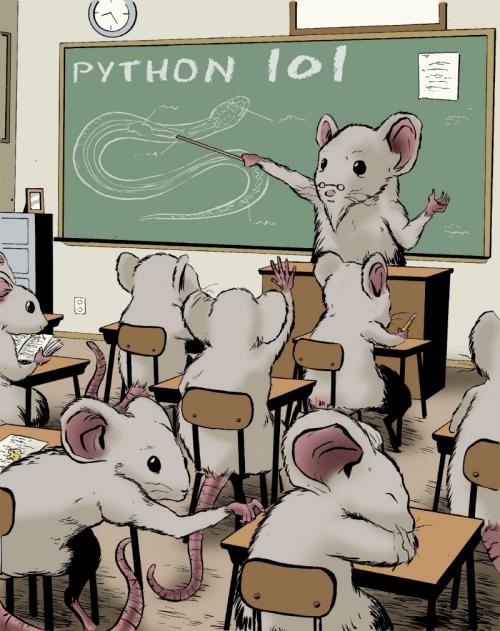Mike Driscoll Python 101 Book Review: It's More Than Just 101!
It’s book review time!

Finally I got the time to write this book review. I asked Mike Driscoll whether I could have this book and then I’ll review it. It’s been a month since Mike sent me this book. The problem is, it’s just not easy for me to find time to read :(
Short words about this book: It’s more than just 101!.
I started reading from the table of contents. Rather than reading all of the pages in this book, I skimmed it. This book contains five parts. I started with the first part: the beginner section. I remember two years ago, I watched the Nick Parlente’s Google Python Class. It’s not easy for me to find a good materials at that time. And Mike explains really good about introduction to Python here.
Since I am a VIM user, I mostly skipped the IDLE section. But it’s good to know that there’s such a good text editor, esp. in Windows where still most of the people use it as operating system. In our meetup, it’s hard to get people who are familiar with Python in Windows.
And then continue with strings. What is string, how to concatenate strings, slice strings, and even how to get the list of string methods. In every chapters there’s a wrapping up sections. It makes me easier to remember what I’ve read so far. After string, we will have three Python’s built-in data types: lists, tuples, and dictionaries. Mike also explains about for loop, import, and class. Since I am not familiar yet with class, I read this chapter carefully. I know, I should write if I want to read carefully. Too bad, I didn’t have time to write while reading this chapter. Mike explains the concept of Class in Python by illustrating a car with drive and brake as the methods.
I jumped to the second part: learning from the library. From a beginner’s perspective, it’s really helpful to have these library introduced. I remembered, two years ago, I didn’t familiar enough with the basic Python library and feeling confused when people around me seems very familiar with those libraries.
In some (or all?) code snippets, I found that the environment is Windows. Or maybe Mike is targetting the audience of the book mostly will be using Windows as their operating system.
I didn’t read all of the chapters in the second part of the book.
BTW, you know what. There are funny pictures in each part of the book. Mostly I read this book in .epub format. And the pictures still looks great even in epub format. I don’t know how Mike wrote this book. From the Appendix A, Mike states that the book is written using RestructuredText.
In part three, I read the Python Debugger chapter. I didn’t know I could debug my code with the way Mike wrote before I read this book. I’ve knew about pdb before, but I haven’t explore it yet. I also read Chapter 28 - An Intro to Testing. This Test Driven Development really needs a dilligent programmers. Because as far as I know, most programmers are lazy to write.
Oh and yes. Most of the screenshot are taken in Windows. That wouldn’t be a problem for me.
I haven’t read part four and five thoroughly. But I found part five useful, when I want to install the phpass python library.
Surely this book is very useful. For me, this book is more than just Python 101. This book makes me realize, I still need to learn a lot about Python. There are still many things I need to practice. One thing I think missing is the closing chapter of the book. No, it’s not what written in Appendix A. In Appendix A, Mike wrote on how to create a program starting from the requirement/specification. In my opinion, closing chapter may consist two-three paragraphs as the last words for the readers.
Many thanks for Mike Driscoll for sending me this great book.
PS: Image Source